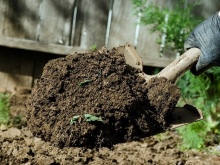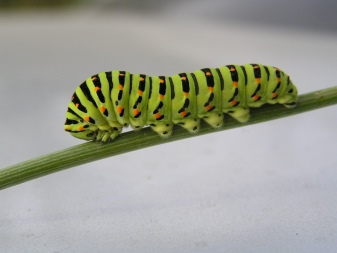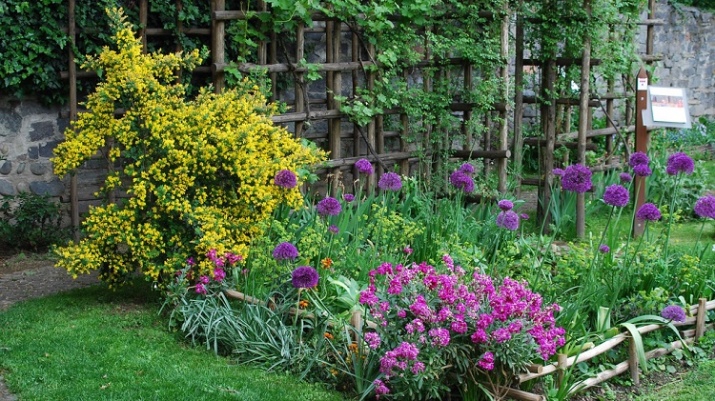Mattiola two-horned: description and subtleties of growing

Blooming and fragrant plants are an integral part of every garden and alley. It is they who help people relieve stress and tension during periods of intense work, and also restore vital energy and emotional state of a person. Each owner of a personal plot tries to decorate his territory with the most beautiful and fragrant flowers. The long and painstaking work of breeders has led to the emergence of a huge number of varieties that surprise with their appearance and smell.
Despite the varietal variety, the night violet has been the most fragrant plant for many years., a small number of bushes of which are able to fill the entire surrounding space with a unique smell. Let's talk about a more detailed description and intricacies of growing matthiola bicorn.






Peculiarities
Mattiola bicorno is an annual ornamental plant, the flowers of which are fragrant with a delicate, but very rich aroma. In the daytime, the floral scent is practically not felt, but in the evening and at night the aroma intensifies and reaches its maximum concentration. In the specialized literature, you can find other names for this flower - levkoy, night or fragrant violet.
Despite the unique aroma, the night violet does not have external beauty, and its buds completely close in the daytime. Given this feature, florists recommend planting Matthiola together with flowering plants, which will decorate the club with bright and rich colors during the day.
The appearance of mattiola and its color range depend on the type of flower.


The stems of the plant can be either straight or spreading, but in any case, a large number of processes can be seen on them. The leaf plate is painted in a rich green color, and its edges have a carved structure. The peculiarity of the leaves is the presence of a velvety surface. The maximum plant height in favorable conditions can reach 65 cm.
Small flowers are tassel-shaped and dim in color. The flowering period begins in early summer and can last until the end of autumn. After the withering of the inflorescences, small boxes are formed on the plant, filled with small seeds, the germination of which can last up to 4 years.



Varieties
More than 50 species of this plant grow in their natural environment. Mattiola bicorn is the most popular flower, which is not only successfully grown in flower beds, but also used to develop new hybrid varieties. Here are the most popular varieties of night two-horned violets.
- "Evening scent" - a variety that has a large number of branches on straight shoots. The maximum flower height is 50 cm. The color of the inflorescences is pale lilac.
- "Star Light" - a mixture of varieties that have a different shade and aroma. The height of the straight stem of an adult plant does not exceed 45 cm.
- "Pink night violet" - balcony variety, the height of which does not exceed 25 cm. The inflorescences are painted in a pale purple hue and have a pleasant sweet aroma.
- "Lilak" - a cold-resistant variety that must be grown in well-lit areas. The peculiarity is the presence of a delicate, pleasant and unique aroma.
- "Summer evening" - the most popular variety, which is most often grown by flower growers. Plant height does not exceed 50 cm. Small inflorescences are painted in a lavender shade.Feature - the presence of a persistent aroma.



Landing
Night violet is a sun-loving plant that should be planted in areas protected from strong gusts of wind. The soil in the flower bed should be loose and nutritious. Matthiola feels most comfortable on loams and sandy loams with a low level of acidity. It is strictly forbidden to plant a fragrant violet after cruciferous plants, the diseases of which will necessarily be transmitted to the flower. Carrying out autumn digging is a guarantee of complete destruction of not only weeds, but also dangerous insects and diseases. Digging up a plot in the fall, it is imperative to enrich it with organic fertilizers. The optimum digging depth is 35 cm.
An annual flower has a weak root system, so experienced gardeners recommend sowing seeds directly into the ground at a permanent growth site. Before planting seed, you must completely dig up the area and remove all weeds. The formed furrows must be disinfected with a manganese solution and only after that the seeds should be distributed in them. The wells must be sprinkled with a thin layer of soil. Having basic experience in conducting agrotechnical work, you can also use the seedling planting method, which will significantly speed up the flowering time of matthiola.



Before planting seeds in containers, they must be filled with nutritious soil, which has a light and airy structure. To prevent the development of fungal diseases, experts recommend disinfecting the soil and the landing box with a manganese solution before planting. For so that the plants have a different flowering period, experienced gardeners recommend sowing seeds in late February and early March.
Due to the very small size of the seed material, it must be planted directly on the surface of the soil. The optimum distance between seeds is 40 mm. A small layer of soil must be poured on top. The final stage of planting is abundant watering of the container with warm, settled water.
To accelerate the emergence of seedlings, the surface of the container must be covered with glass or plastic wrap, and also placed on a warm and sunny windowsill.


After the first shoots appear, it is imperative to remove the protective shelter. The optimum temperature for seedling growth is + 15 degrees. To prevent stretching of flowers, it is imperative to install additional light sources. 2 weeks after the emergence of seedlings, it is necessary to start picking them. A fragile root system requires the utmost level of care when replanting, as well as the obligatory abundant watering of the soil. Compliance with all transplanting rules does not guarantee the complete survival of plants. To minimize damage to the roots, it is necessary to try to keep an earthen ball around them. The cut plants should be watered abundantly and placed in a well-lit place.
Experienced growers recommend avoiding picking when growing seedlings. In order to avoid transplanting, experts recommend initially planting seeds in separate containers, several pieces at a time, and after their germination, leave only the strongest in the container. Transplanting plants to a permanent place of growth should be carried out at the beginning of summer. The optimal distance between the bushes is 25 cm. In the first days, the seedlings must be protected from direct sunlight, the action of which can provoke wilting of plants.


Correct care
Growing ornamental plants is not only a fascinating event, but also very troublesome. In order for the plant to please with its appearance and fragrant aroma, it is imperative to comply with all the requirements for caring for it after planting. Experienced gardeners recommend the following agrotechnical measures:
- watering;
- top dressing;
- weed removal;
- loosening the soil;
- root zone mulching;
- protection against pests.
Particular attention must be paid to watering the plant and feeding it.


Watering
Matthiola belongs to moisture-loving plants, but excess water and waterlogging of the site can provoke rotting of the root system. It is necessary to moisten the soil only as necessary, taking into account the average daily ambient temperature. The most favorable time for watering is early morning. Experienced gardeners recommend moistening the soil not in one step, but at least two. This trick will prevent moisture stagnation and saturate the plant with water as much as possible. Mulching the soil with sawdust or chopped bark will help prevent the soil from drying out.
To prevent the formation of an earthen crust after watering, it is imperative to carry out regular weeding of the areas with the simultaneous removal of weeds, which take a large amount of moisture and nutrients from the soil. It is possible to reduce the frequency of watering if, immediately after flowering, all wilted flowers are collected, in the place of which seed baskets cannot form.


Top dressing
To obtain beautiful shoots and rich colors of night violet flowers, experts recommend enriching the soil with nutrients several times a season. As fertilizers, you can use special mineral complexes for flowering plants, which contain all the necessary elements for the full growth and development of a flower. The first application of fertilizers should be carried out one month after planting the seedlings. Further, this procedure should be carried out during the formation of buds and during the period of abundant flowering.
In regions with poor soil, experts recommend feeding flowers at least 6 times per season.


Diseases and pests
Matthiola dioica has a high level of resistance to many fungal, viral and bacterial diseases. Despite this feature, keela and fusarium can lead to the death of the plant. If the disease is isolated, then you can cope with it with the help of special fungicides. In case of massive damage to flowers, experts recommend pulling out all diseased bushes and burning them. The fragrant greenery of the night violet often suffers from the following pests:
- cruciferous flea;
- cabbage butterfly;
- white woman;
- caterpillars.


These parasites can not only spoil the appearance of the plant, but also lead to its death. When the first signs of insects appear, the beds should be sprayed with special preparations. It is possible to remove slugs and caterpillars from the site only by mechanical collection. These pests choose places with high humidity as their habitat, which must be taken into account when moistening the soil.
Particular attention must be paid to preventive measures, which consist of regular plant inspections and compliance with the density of green spaces.


Use in landscape design
The night violet is an unusual plant that has an ordinary appearance and a stunning aroma. These features must be taken into account when choosing a place for planting matthiola. Landscaping experts recommend planting a night violet near the house, next to summer gazebos, playgrounds, and also along the edges of paths. For the aromatization of the entire local area, it is not necessary to make huge flower beds and flower beds; it will be quite enough to plant small groups of plants throughout the site.
In order for the green spaces of night violets to attract attention not only in the evening and at night, they must be combined with other flowering plants that will delight the eye during the day.
The plant looks especially impressive together with spicy crops and ground cover ornamental plants.


The flower looks harmoniously with thyme, basil, sage, verbena, petunia, nasturtium, balsam, lemon balm and mint.Geranium, monarda, yarrow, daisy will help revive the green spaces of night violets. Combining a flower with a tea rose will result in a round-the-clock scent.
Many gardeners use the night violet not only for landscaping the site, but also for decorating balconies and loggias. In comfortable growing conditions, this flower feels good in flower pots and decorative vases. In order to enjoy the enchanting aroma of mattiola not only outdoors, but also indoors, it can be used in bouquets and flower arrangements. Plants, uprooted with roots, can be fragrant for several days.






In the next video, you will see the sowing of matthiola bicorn in open ground.







































































































The comment was sent successfully.